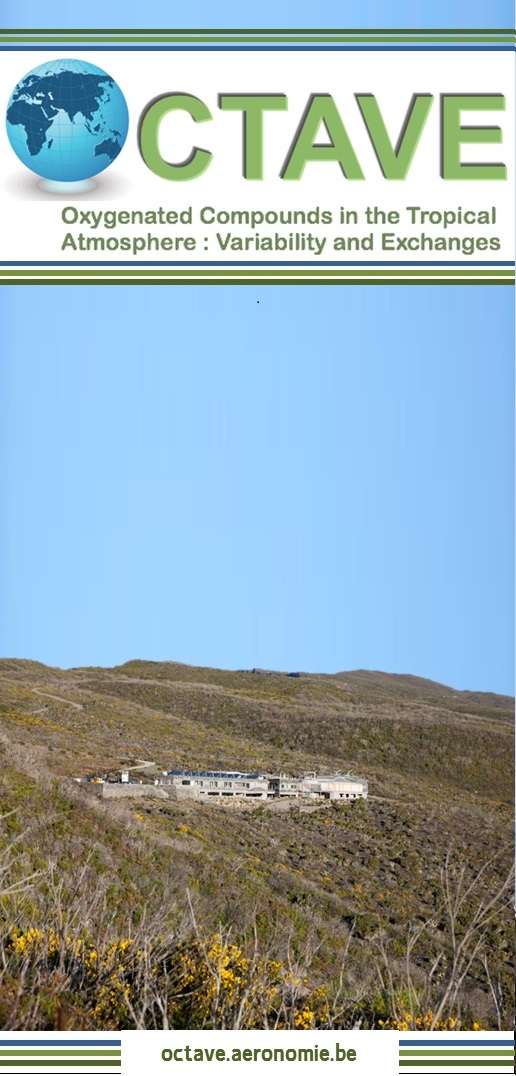 OCTAVE – Oxygenated organic Compounds in the Tropical Atmosphere : Variability and atmosphere-biosphere Exchanges
OCTAVE – Oxygenated organic Compounds in the Tropical Atmosphere : Variability and atmosphere-biosphere Exchanges
Oxygenated Volatile Organic Compounds (OVOCs) have a significant impact on the atmospheric oxidative capacity and climate. Methanol, acetaldehyde and acetone are among the most abundant OVOCs, especially in the marine atmosphere. However, large discrepancies in OVOC budget estimates still exist, mostly due to incomplete representation of photochemical OVOC production, and uncertainties in terrestrial emissions and ocean/atmosphere exchanges of OVOCs and their precursors. The paucity of OVOC observations in tropical regions strongly contributes to those uncertainties. A better understanding of OVOC sources and sinks is required to quantify their impact on atmospheric oxidants, on the lifetime of methane and consequently on climate.
The OCTAVE project aims to provide an improved assessment of the budget and role of OVOCs in tropical regions, and especially over oceans, relying on an integrated approach combining in situ measurements, satellite retrievals and modelling. The specific objectives are :
- to generate a 2-year dataset of atmospheric measurements of OVOCs and related compounds by mass spectrometry (PTR-MS) and remote sensing infrared spectroscopy (FTIR) at the high-altitude site of Maïdo (2155 m a.s.l.) on Reunion Island, in the Indian Ocean
- to identify and quantify OVOC sources contributing to the measurements at Reunion Island, with the help of multivariate statistical analysis, backtrajectory calculations and 3-dimensional modelling.
- to apply an innovative methodology to generate improved and better characterized global distributions of the column abundances of methanol and other VOCs using multi-annual remote sensing data from the IASI sensor on the MetOp satellite.
- to perform an updated model evaluation of the budget of OVOCs, based on spaceborne data (for CH3OH) and a wide collection of aircraft, ship-based and ground-based measurements, including those obtained at La Réunion. The resulting impact of OVOCs on the oxidizing capacity of the atmosphere will be determined.

